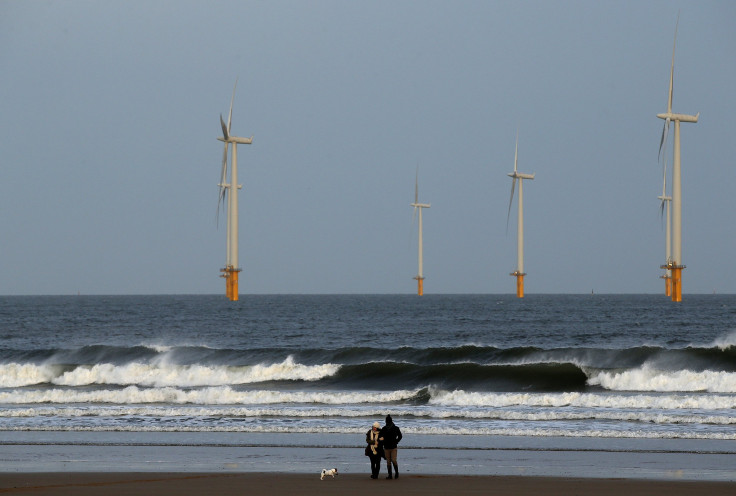US Offshore Wind Energy Industry Inches Forward With Virginia Research Project

The race to build America’s first offshore wind energy farm is a story of fits and starts. After more than a decade of proposals and plans, not one commercial turbine is spinning yet in U.S. waters, compared to thousands in Europe and China.
But something's happening along the Atlantic coast. A handful of projects are steadily progressing there, most recently a wind farm near Virginia. This week, federal officials for the first time issued a wind research lease to a Virginia state agency, allowing a Dominion Virginia Power subsidiary to build and operate two test turbines in federal waters. If successful, the $250 million demonstration could help the utility decide how and where to construct a full-scale offshore wind farm.
“Developing our clean energy resources is an essential element of building a new Virginia economy,” Gov. Terry McAuliffe said in a statement Tuesday. “With this research lease, Virginia is leading the way in building wind turbines in the Atlantic Ocean and taking the next step toward the clean energy economy we need to create jobs and lower energy costs now and into the future.”
The United States has lagged Europe and China because developers and utilities lack the kind of financial and regulatory incentives enjoyed by their counterparts overseas. Applying for permits and securing leases is a long and expensive process, and federal and state tax credits and rebates are too limited to encourage private investment in multibillion-dollar projects. Despite the progress abroad, U.S. utilities and lenders are generally hesitant to be early adopters in America's fledgling offshore wind industry.
But Virginia can now move forward with the pair of 6-megawatt test turbines, to be installed about 24 miles off the coast of Virginia Beach. The windmills could start spinning by 2017, generating enough electricity to power about 3,000 homes. Dominion already has a federal lease for an 113,000-acre area adjacent to the test site. A commercial-size wind farm there could produce enough electricity for some 700,000 homes and create as many as 11,600 jobs over the next two decades, according to state estimates.
Abigail Ross Hopper, who directs the federal Bureau of Ocean Energy Management, said the Virginia research lease “will help us understand the wind potential, weather and other conditions relevant to standing up wind power generation offshore Virginia.”
Further up the Atlantic coast, a wind project proposed near Rhode Island hit a major milestone earlier this month. Deepwater Wind Block Island, a subsidiary of Deepwater Wind, secured all the financing needed to complete its five-turbine, 30-megawatt wind farm in Rhode Island waters. The project is poised to be America’s first offshore wind project, albeit a relatively small one. Turbines are expected to start spinning there by the end of 2016.
In Europe, meanwhile, more than 2,500 commercial wind turbines are already operating in the water near 11 countries, with a total power-generation capacity of about 8,000 megawatts -- the equivalent of about 16 large coal-fired power plants, according to the European Wind Energy Association. China is on track to add about 2,000 megawatts of offshore wind capacity this year and plans to install 10,000 more megawatts in the next five years, China’s National Energy Administration said last fall.
The U.S. does have a major offshore wind project in the works near Massachusetts, but a series of regulatory, legal and financial problems have steadily delayed the project over the last 14 years. The $2.5 billion Cape Wind project near Cape Cod suffered its latest blow in January after two Massachusetts power companies pulled out of the project. NStar and National Grid said they canceled their contracts to buy about three-fourths of the proposed power output because developers failed to meet major Dec. 31 financing deadlines.
With Cape Wind sidetracked once again, U.S. wind proponents for now are setting their sights on the modest wind projects in Virginia and Rhode Island. So long as offshore wind remains uncharted territory for regulators and developers, the smaller wind promise to help smooth out the kinks before companies plow billions into thousand-megawatt projects.
© Copyright IBTimes 2024. All rights reserved.




















